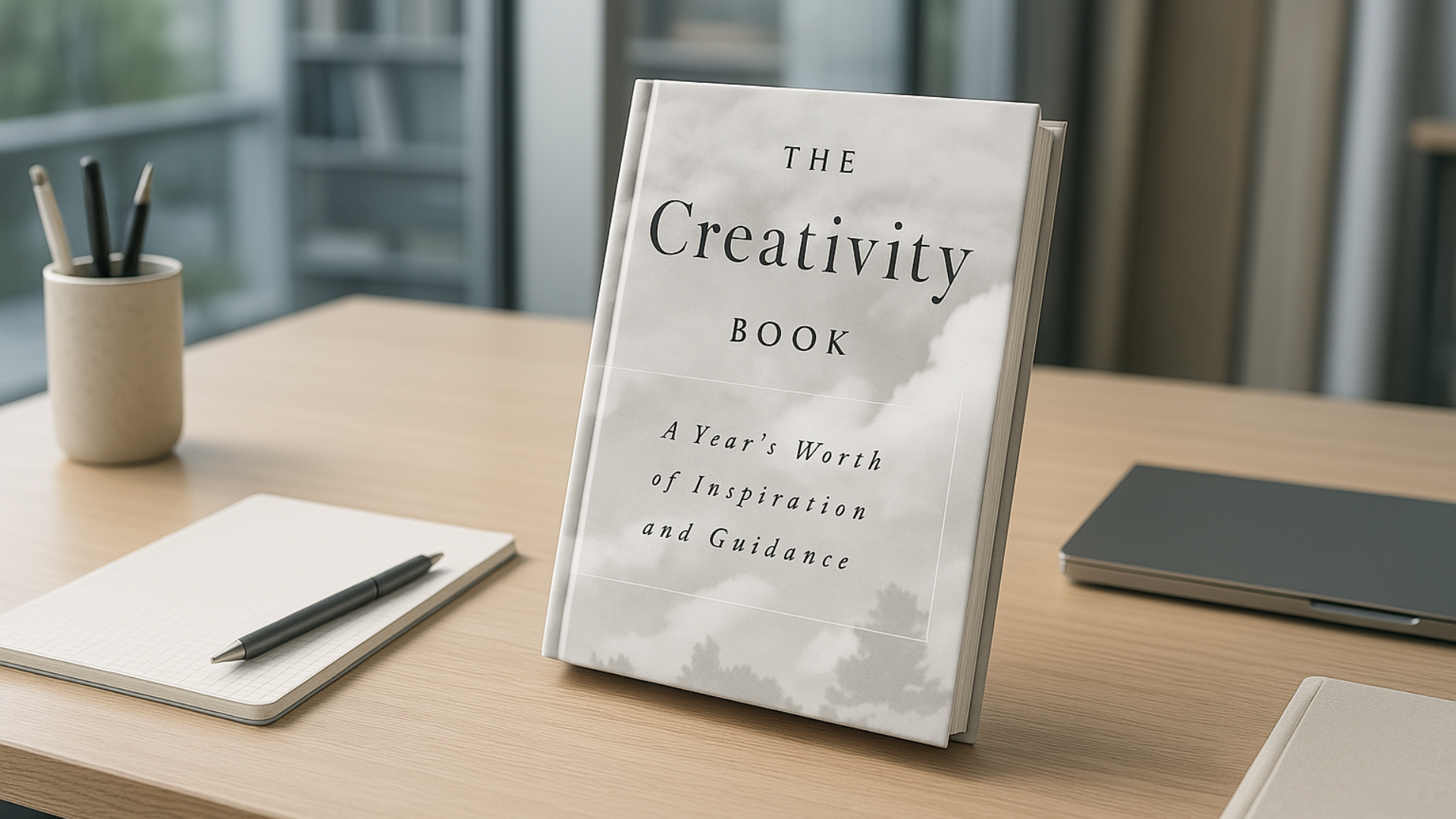Slow Creativity That Lasts: Eric Maisel’s Structured Approach

Book Review: The Creativity Book by Eric Maisel
A year-long companion for growing your creative self from the inside out
For anyone who has ever longed to feel more alive in their creative life, The Creativity Book by Eric Maisel offers a thoughtful, structured invitation to reconnect with the act of making. Part workbook, part personal growth guide, and part philosophical reflection, this book encourages readers to approach creativity not as a fleeting inspiration, but as a life practice worth showing up for every day.
Whether you’re an artist in transition, a beginner looking for traction, or a seasoned creative feeling off track, this book meets you with a clear voice and a long view.
What the book promises
Maisel promises to guide the reader through a full year of creative growth. Structured around weekly reflections and practical exercises, the book is intended to help you not only complete a specific creative project but also build a life that supports your creativity more broadly.
The promise is both tangible and expansive. On one level, you will make progress on a creative goal, be it a novel, a business, or a new habit. On another, you will reshape your identity into that of an “everyday creative person.” Maisel frames this transformation as a kind of inner revolution, a reclaiming of the right to create in ways that feel authentic and grounded.
What the book delivers
This book delivers on its structure and scope. It is divided into twelve parts, one for each month, and includes 88 distinct reflections and practices. The final eight weeks are reserved for the reader to devote themselves to a creative project. This pacing makes the book highly usable for those who appreciate direction but dislike rigidity.
Maisel’s approach weaves psychological insight with creative philosophy. He encourages the reader to examine common barriers such as perfectionism, self-doubt, and resistance. But he does so with a tone that is more practical than therapeutic. This is not a self-help book in the conventional sense. It is a set of invitations for deepening attention, commitment, and play.
What stands out most is Maisel’s clarity about the role of daily action. He avoids romanticizing creativity and instead calls for steady, conscious work. His exercises are designed to shift how you think, not just what you do.
Style and structure
Maisel writes in a clean, no-frills style that is accessible without being simplistic. His voice is direct and assured, but never patronizing. He brings both clinical and creative authority to the material, which helps the reader trust the process even when it feels unfamiliar or difficult.
The book’s structure is one of its strongest assets. With two readings and exercises per week, it offers just enough momentum to keep you engaged without overwhelming your schedule. Many of the practices are reflective or conceptual, though there are also tangible actions, like crafting rituals, reorganizing workspaces, or journaling your fears and goals.
Each section is self-contained but thematically connected to the larger arc. Readers can move through the book chronologically or dip in and out as needed, depending on where they feel most blocked or inspired.
Light limitations
Some readers may find Maisel’s philosophical tone occasionally repetitive, especially in the early chapters. His emphasis on the inner life of the artist is powerful, but at times the messaging can feel abstract, particularly for those looking for more technical or craft-specific guidance.
The weekly prompts range from deeply personal to playfully odd, and while many are impactful, some may feel opaque or overly metaphorical for more literal-minded readers. There is an expectation that the reader is self-directed and capable of holding ambiguity. For those newer to reflective practices, this might feel like a hurdle.
That said, the book is not meant to provide step-by-step instruction in any particular medium. Its goal is to build creative resilience and insight. On that front, the lack of prescriptive advice is a strength, not a weakness.
Final thoughts
The Creativity Book is a steady, generous companion for anyone committed to making creativity a deeper part of their life. Rather than offering tricks or shortcuts, Maisel encourages readers to cultivate attention, courage, and discipline. His approach is slow, honest, and intentional.
This book is particularly well-suited to those who are navigating a period of change. If you are re-entering creative work after a hiatus, rethinking your identity as a maker, or seeking to re-establish a daily practice, this guide offers the scaffolding to do so with care.
Maisel doesn’t ask the reader to transform overnight. He asks only that we show up and begin. And over time, that may be exactly what changes everything.
Highly recommended for thoughtful creatives, returning artists, and anyone seeking a year-long structure to rebuild their creative identity through steady reflection, daily action, and meaningful self-inquiry.